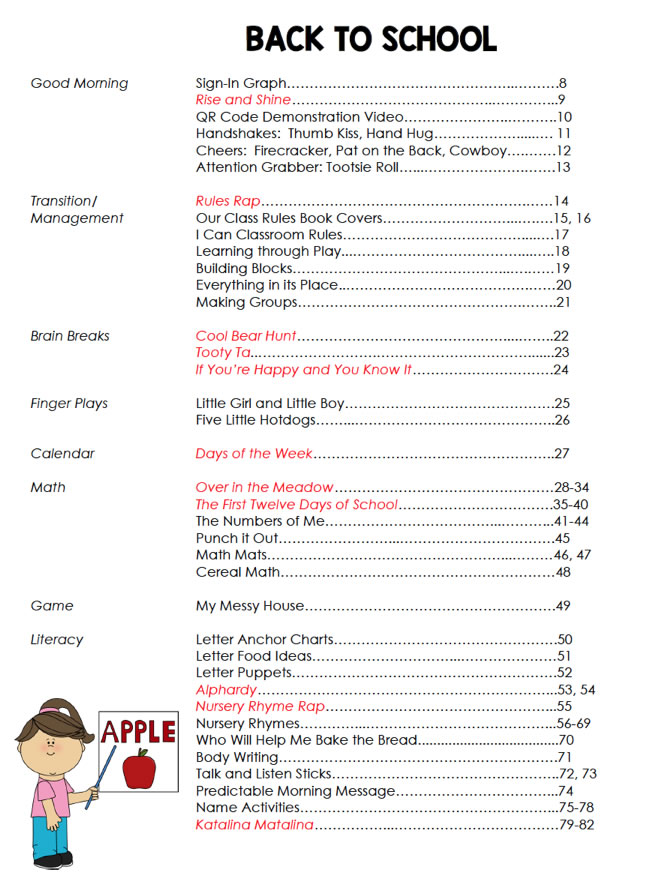Nine Packets for the Whole School Year
Nine packets, each with over 100 pages
A month of hands-on learning activities
Cheers, Handshakes, Attention Grabbers
Calendar Time Learning, Transitions, Prezis
Management Tips and Tricks, Brain Breaks
Finger Plays, Songs, Character Education
Math, Literacy, Science, Seasonal Lessons
We used to play in the sand,
Do puzzles, play chase, and swing.
Now we sit in front of computers.
They’ve taken away our song.
.... ....
We wish "they" hadn't taken away the song.
Monthly Happies will help you to put
songs and joy back in your classroom for
your students while helping them continue
to learn. So our goal and hope with this packet
Is to put some “happies” in your day.
Shut your door and sing and dance -
Make learning challenging, but full of play.
Give children back their song,
Laugh, and love, and each day,
So when they’ve all grown up
They’ll remember YOU in a special way.
CHALLENGING AND PLAYFUL Yes, we want to challenge children and provide them with an opportunity to develop academic skills, but we must also recognize that they are children. The best way for children to learn is through PLAY. That is their work. The secret is to take what children have to learn (skills) and make it so much fun that it will seem like play.
INTENTIONAL TEACHING Intentional teaching means you act purposefully with a goal in mind. Intentional teachers set up activities and the environment so the students can accomplish those goals. By using the songs and learning activities in this packet, you will be developing language skills, math skills, science concepts, physical skills, and social emotional skills. The ultimate goal of any education system is to develop well-rounded individuals, and these activities focus on the WHOLE CHILD.
ACTIVE LEARNING Teaching is what the teacher does. Learning is what the student does! Key elements of active learning include student activity and engagement in the learning process. Our songs and activities will have your students moving to facilitate that mind-body connection. They’ll also be talking, sharing, and cooperating with their classmates.
PURPOSEFUL PRACTICE FOR AUTOMATICITY This is a fancy way of saying “repetition.” Children must practice reading, sounds, sight words, math facts, etc. over and over to master skills. They may not want to do a worksheet over and over, but with a catchy tune or hands-on game you’ll hear, “Do it again!”
DIFFERENTIATED INSTRUCTION The beauty of a song and dance is that it provides an open platform for children with different skill sets to enjoy something together. Remember, there is no right or wrong way to dance or move. IT’S ALL GOOD! As long as the children are engaged and having fun it’s a good thing. Research suggests it takes 7 to 25 times to put a movement in the brain, so watch how children progress and improve as you repeat activities.
EXECUTIVE FUNCTION There is a great interest in the executive function because it seems to be a bigger predictor of academic success and life success than IQ. When children sing, move, and play these games, you are actually nurturing the executive function because they need to self-regulate. There is task initiation and task completion because they must start and stop on cue.


